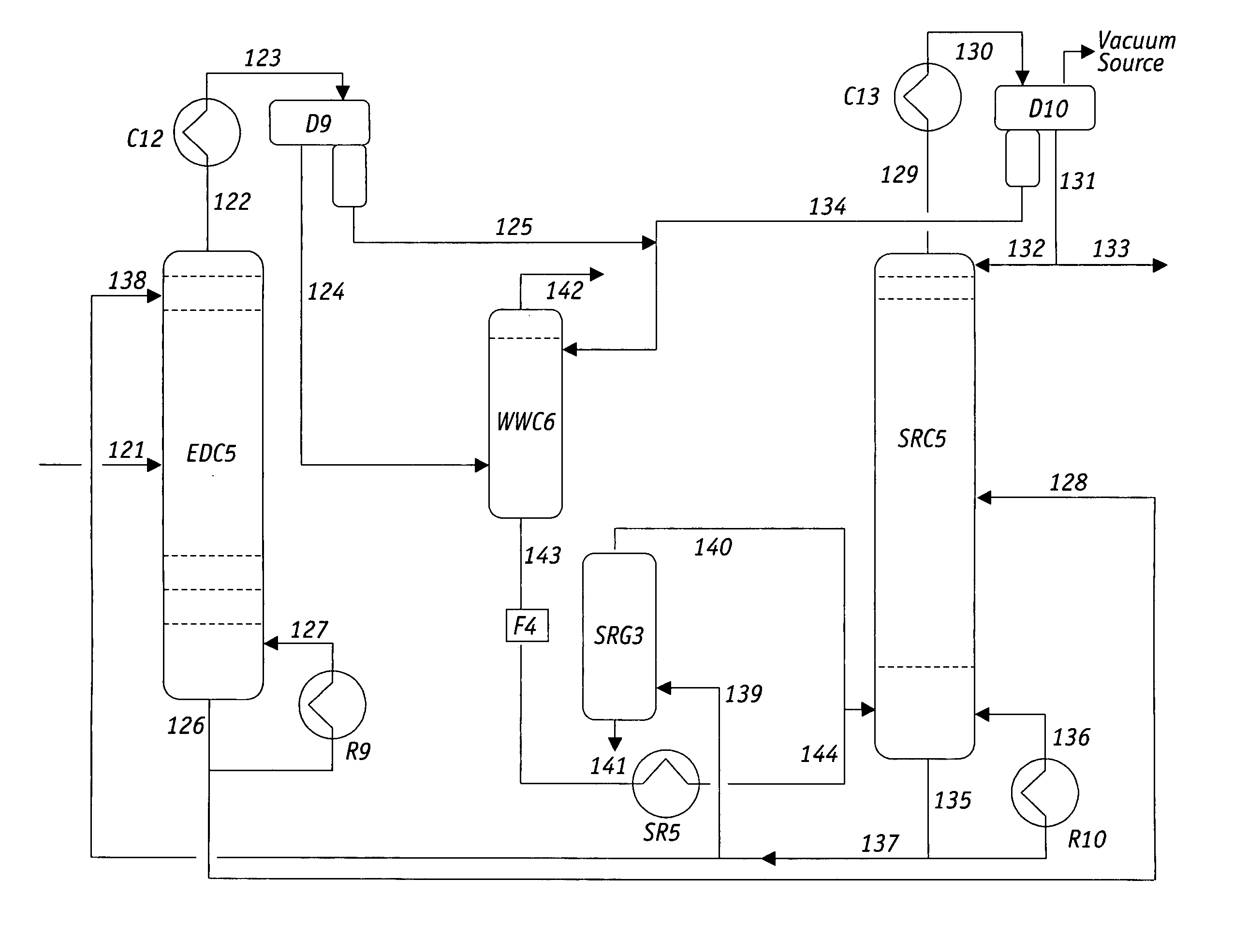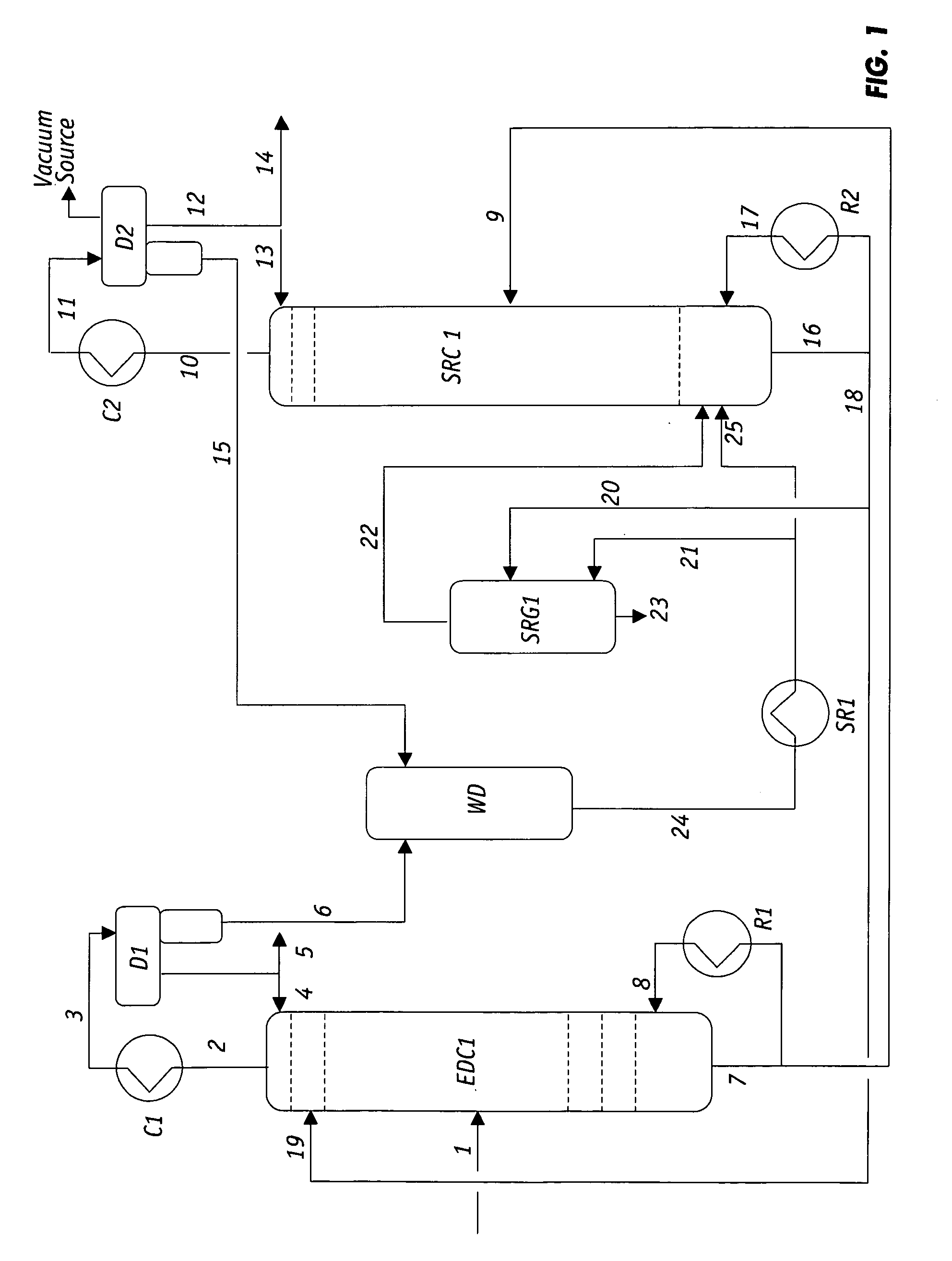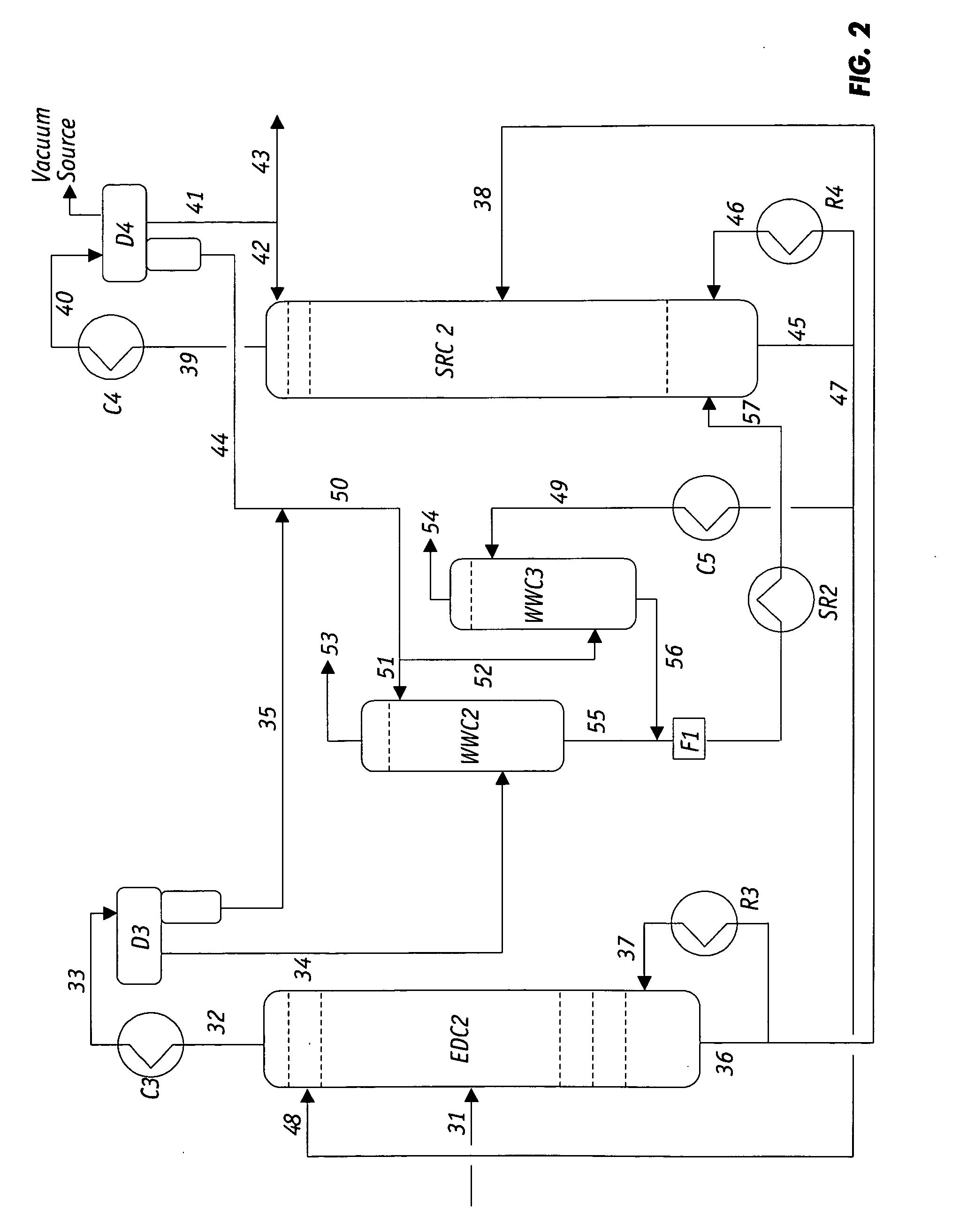Extractive distillation processes using water-soluble extractive solvents
a technology of extractive solvents and distillation processes, which is applied in the direction of azeotropic/extractive distillation, separation processes, hydrocarbon oil treatment products, etc., can solve the problems of inability to satisfactorily process the full boiling-range aromatic feedstock, process failure, and ed process might not remove all the generated polymers, so as to enhance the extractive distillation process and eliminate the overhead liquid reflux of edc. , the effect of reducing steam consumption
- Summary
- Abstract
- Description
- Claims
- Application Information
AI Technical Summary
Benefits of technology
Problems solved by technology
Method used
Image
Examples
Embodiment Construction
[0056]The present invention is directed to extractive distillation processes for separating and recovering polar hydrocarbons from less-polar hydrocarbons as well as removing heavy hydrocarbons and / or polymer contaminants. The separation is effected through the use of water-soluble extractive distillation solvents that are characteristically selective for absorbing the polar hydrocarbons. Use of the terms “polar” and “less polar” is intended to distinguish between classes of hydrocarbons wherein one particular type is more polar than the other. The invention is particularly suited for applications where the feedstock composition contains mixtures of polar and less polar hydrocarbons. These mixtures include: (1) aromatics and non-aromatics, (2) diolefins and olefins, (3) naphthenes and paraffins, or (4) styrene and C8 aromatics. Exemplary water-soluble solvents can be selected from sulfolane, polyalkylene glycols, N-substituted morpholine, furfural, acetonitrile, dimethyl formamide, ...
PUM
| Property | Measurement | Unit |
|---|---|---|
| boiling point | aaaaa | aaaaa |
| pressure | aaaaa | aaaaa |
| temperature | aaaaa | aaaaa |
Abstract
Description
Claims
Application Information
 Login to View More
Login to View More - R&D
- Intellectual Property
- Life Sciences
- Materials
- Tech Scout
- Unparalleled Data Quality
- Higher Quality Content
- 60% Fewer Hallucinations
Browse by: Latest US Patents, China's latest patents, Technical Efficacy Thesaurus, Application Domain, Technology Topic, Popular Technical Reports.
© 2025 PatSnap. All rights reserved.Legal|Privacy policy|Modern Slavery Act Transparency Statement|Sitemap|About US| Contact US: help@patsnap.com



